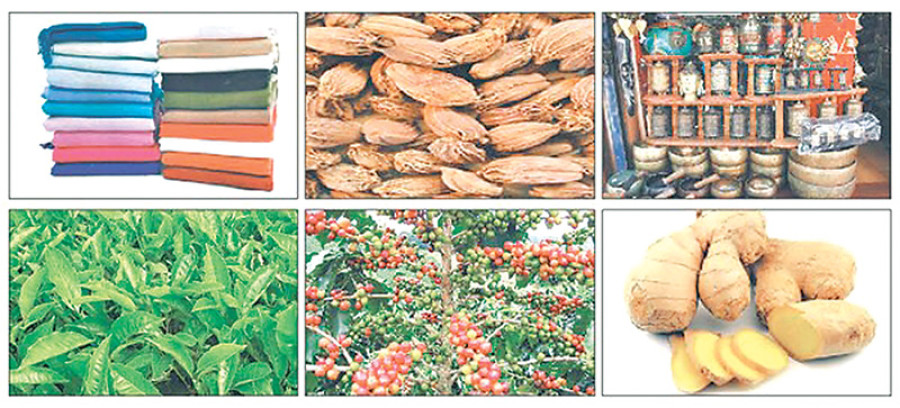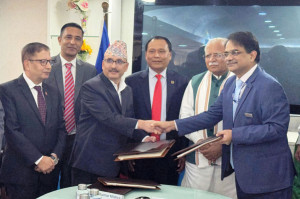Money
‘Half of Nepali exports face non-tariff barriers’
About half of Nepali exports face non-tariff barriers like regulatory and procedural obstacles in foreign markets, the Commerce Ministry said.
About half of Nepali exports face non-tariff barriers like regulatory and procedural obstacles in foreign markets, the Commerce Ministry said.
Close to two-thirds of the challenges faced by Nepali exporters are related to sanitary and phytosanitary standards and technical barriers to trade.
Other challenges have to do with regulations and associated conformity assessment requirements such as testing and certification.
Another concern identified is lack of accredited testing laboratories in Nepal. The barriers to trade were revealed by a study carried out by the Commerce Ministry in association with the International Trade Centre (ITC), a multilateral joint agency under the World Trade Organisation and the United Nations.
The survey was conducted among 577 business enterprises operating in 20 different locations across the country.
The ministry released the report on Friday amid a programme entitled ‘Launching of National Sector Export Strategies and Non-Tariff Measures’.
Speaking at the ceremony, Commerce Minister Meen Bahadur Bishwakarma said traders needed to stay updated of export regulations.
“Global trade practices are undergoing rapid technological development, and non-tariff barriers pose serious challenges to their business abroad,” he said.
ITC Executive Director Arancha Gonzalez said the survey findings would help shed light on issues like knots in the system. “These knots need to be loosened if businesses are to be able to export more and better benefit from trade opportunities,” Gonzalez added.
Meanwhile, the ministry has formulated sectoral strategies for four high export value products—large cardamom, tea, coffee and handmade paper and paper products—with the aim of boosting their export capacity besides ensuring more value addition to facilitate greater trade in regional and global markets.
These products have been identified as high export potential goods by the Nepal Trade Integration Strategy 2016.
According to the ITC, the strategies highlight competitiveness constraints in the sectors while also identifying market opportunities for these products.
The strategies include detailed plans of action that can provide guidance in the areas of production, processing, marketing and quality improvement with the aim of building sustainable value chains in these sectors.
The four strategies have identified supply-side constraints and opportunities for value addition, diversification and investment specific to each of the recognised products.
They connect trade-specific issues to broader developmental dimensions including each sector’s impact on poverty reduction, employment generation and sustainable development.
The ministry has identified three strategic objectives for large cardamom: “Improve production and postharvest practices to increase value retention, foster sector development coordination and research, and promote two variants—Black and Pink Everest Cardamom—to achieve greater market penetration and diversification.” Nepal is the largest producer of large cardamom in the world.
The four key strategic objectives envisaged for Nepali tea are improving the quality of green leaves, improving compliance to meet market demand, reinforcing institutional coordination to manage quality and improve market access, and developing Nepali tea varieties.
Strengthening the national brand through value addition and increasing market diversification has also been recommended for enhancing the international market for Nepali tea.
Likewise, four strategies have been pointed out for Nepali coffee. They are improving the quality of coffee cherries, developing support capacities for coffee related cooperatives and ensuring more organic certification, strengthening national sector development coordination and enhancing recognition of Himalayan speciality coffee in domestic and foreign markets.
Likewise, the strategy for handmade paper consists of three sub-headings. “Enhance sustainable development of Lokta collection and production, diversify and upgrade the quality of sustainable handmade paper production and paper products to meet market demand, and strengthen institutional support to small and medium enterprises,” the ITC said on its website.
Commerce Secretary Chandra Kumar Ghimire said the sectoral strategies could help resolve supply-side constraints in the concerned sectors by providing a clear roadmap.
According to Ghimire, the ministry selected these products based on their trade performance in the international market and the socio-economic impact that these sectors have been creating at the grassroots level.




 22.12°C Kathmandu
22.12°C Kathmandu














